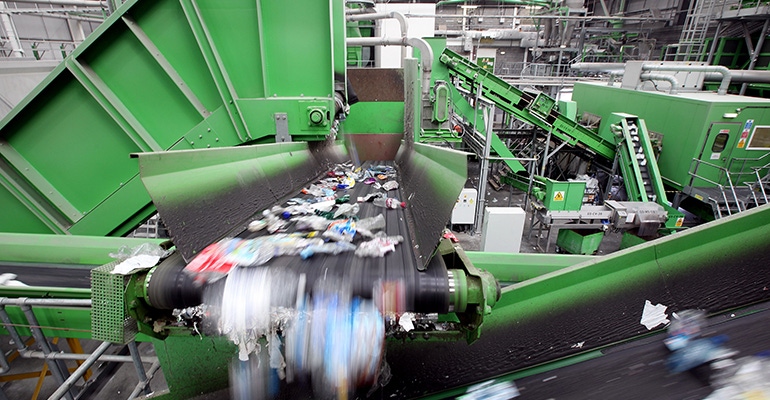There are six key areas where the industry has invested and innovated.

On April 22, nearly 50 years ago, a movement activated 20 million Americans from all walks of life. Known as Earth Day, it is widely credited with launching the modern environmental movement.
Despite the environmental awareness it has created, Americans are today generating more waste than ever before. Fortunately, the negative impacts on our environment are actually decreasing due to significant investment and innovation in the waste and recycling industry.
From disposal to collection to processing, the largest U.S. waste companies are rethinking waste handling, increasing efficiency and enhancing environmental protection.
Waste disposal and recycling companies—in an approximately $75 billion market in the U.S.—undertake a gargantuan task: disposing of roughly 260 million tons of waste per year (or 4.4 pounds of waste for every American, every day), with 34 percent of this being recycled and composted. Hauling this enormous amount of waste in a responsible and environmentally sustainable way requires billions of dollars of annual investment from the industry.
There are six key areas where the industry has invested and innovated:
Recycling: Waste and recycling companies are constantly investing in recycling, improving processes and techniques. Vast improvements have resulted, such as continual advancements in single-stream recycling, in which customers can dump everything in one bin and recycling companies sort through it for them, sharply improving recycling rates and reducing the burden of sorting on the customer. These advances in recycling also reduce truck count and therefore emissions.
Collection and disposal technology: Innovations are on clear display at any of the large waste collection and disposal companies today. Automated sensors provide alerts that containers are full and need servicing. Advanced disk screens, magnets and optical sorters identify and separate recyclables. Trucks running on compressed natural gas—cleaner and quieter than diesel—travel on highly efficient routes for trash pickups scheduled by mobile apps and logistics software. In-vehicle systems monitor and ensure driver safety and collect information on vehicle efficiency.
Route efficiency and density: Optimal routing is critical to reducing emissions and protecting the environment, and companies have invested in highly-sophisticated IT systems and route optimization software. Highly automated trucks with robotic arms further increase efficiency along existing routes, reducing the time between stops, decreasing emissions and enhancing worker safety. Unlike personal transport, point-to-point pickups for residential and commercial waste are not economically viable or environmentally helpful, burning more fuel and increasing truck congestion. While the industry has long offered point-to-point collection to some customers, the point-to-point method is less time- and energy-efficient at scale than well-defined routes with predictable disposal practices.
Modernizing landfills: The industry has harnessed economies of scale and science, improving landfills and making “garbage dumps” a thing of the past. Today’s highly engineered modern landfills operate under strict federal and state regulations to ensure the protection of health and the environment. Many of today’s landfills trap gases to generate electricity and heat for homes and businesses. Integrated geomembrane solar panel systems, enabling the production of clean, sustainable energy, cover many of the landfills run by large disposal companies. The industry is also advancing carbon sequestration in landfills, preventing carbon from re-entering the atmosphere.
Safety: Leading companies continuously improve safety, an issue of critical importance to an industry that navigates 30-ton trucks through family neighborhoods. They also require all drivers to qualify through rigorous training at specially designed facilities, and continue to reduce accident and injury rates year after year.
Customer Tools: Larger companies have also invested in customer-facing technology—whether online or mobile apps—to make it easier to start a service, schedule extra pick-up, pay bills or to get customer push notifications, to name just a few.
The complexity of the waste ecosystem has never been greater, and the industry has grown to account for this, now employing nearly half a million people in the U.S. The industry takes great pride in finding innovative ways to improve efficiency and operate safely, while reducing environmental impact. It’s what consumers—and our planet—deserve.
Kevin Kraushaar is Interim President and CEO of the National Waste & Recycling Association.
About the Author(s)
You May Also Like


